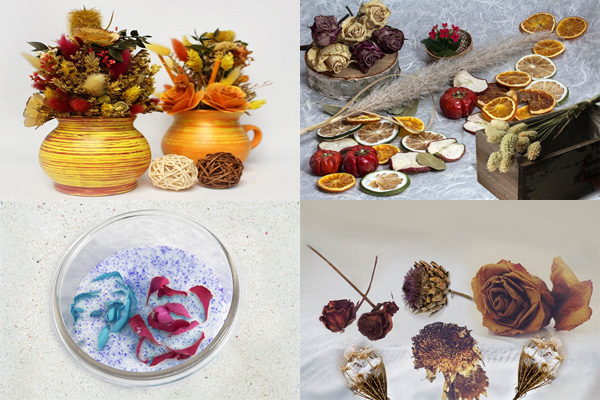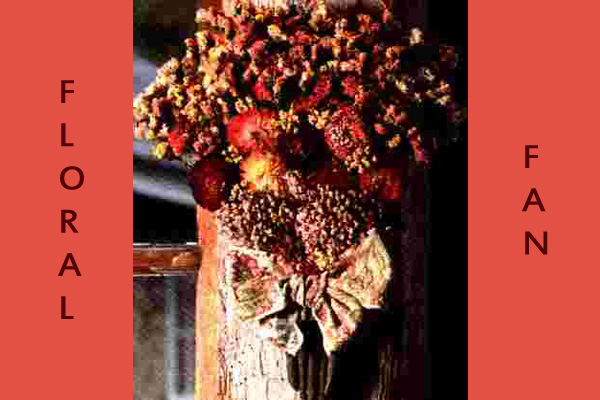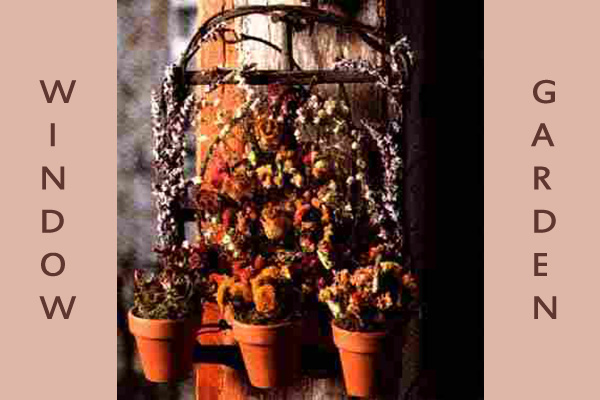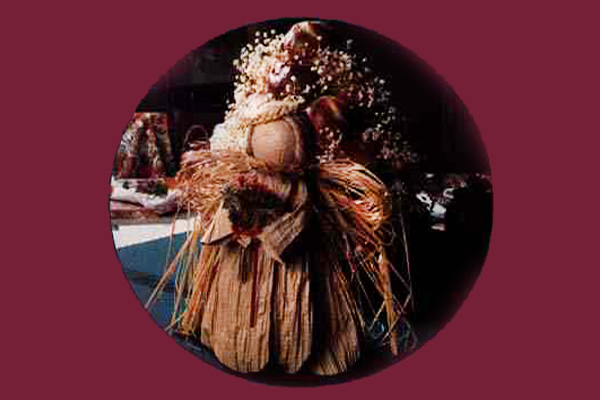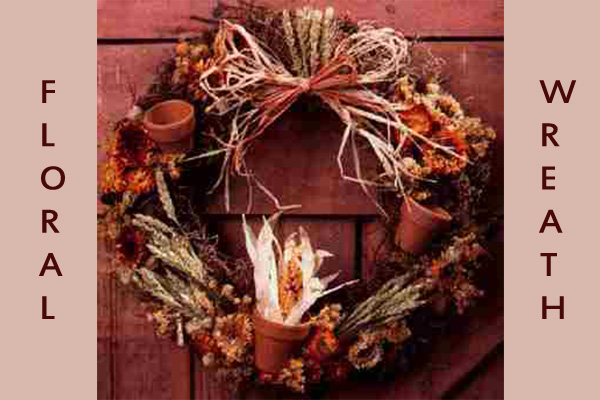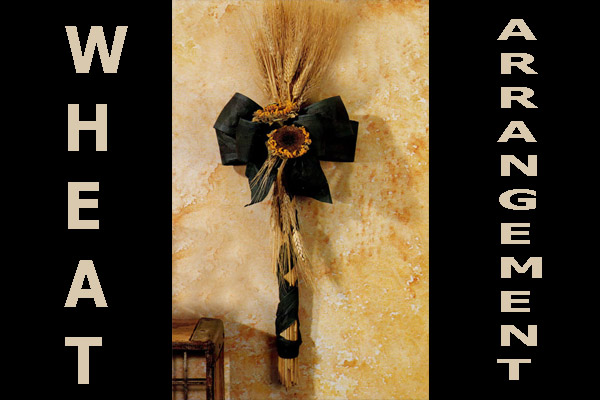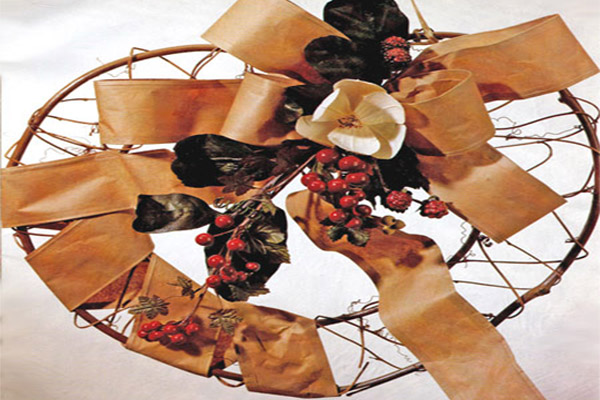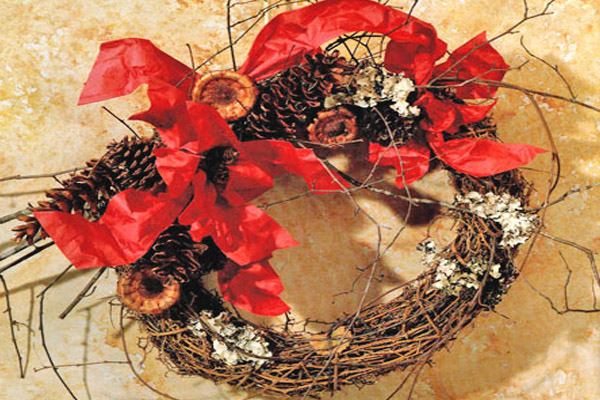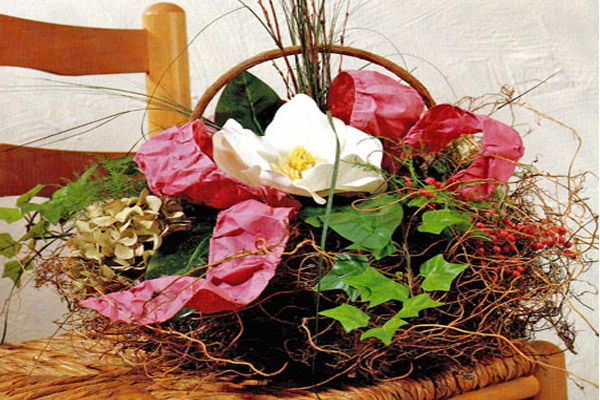Great Craft Projects
Surprise your loved ones with great craft creations...
Herbal Craft
Make Beautiful Herbal Craft Projects
Some people like to preserve the flowers from a wedding bouquet or other special occasions. For many others preserving flowers and foliage can be fun and popular hobby year round.
Common Methods to Preserve Plants:
Prepare Dry Material Instantly
If you need some dry material instantly you can use your microwave oven for making what you need. To dry herbs or flowers in the microwave oven instantly you will need SILICA GEL. Silica gel is a substance used to dry delicate flowers too, such as roses or calendula, as it preserves their forms and colors well. Silica gel can usually be found in craft stores. It is very simple to dry flowers with a silica crystals, just use microwave safe container with a 1" (2,5 cm) thick layer of the silica crystals and place your flowers on the top allowing about 1-inch of space around the sides and between each flowers. Put another 1-inch layer on the top of flowers and then microwave on cca 50 % power for approximately 2-3 minutes, depending on the type of your microwave and flowers. It is better to check the material progress an add some more times if needed. Flowers and leaves often have different drying times, microwave them separately for better result.
TIPS:
Never use silica gel containers for preparing food after you use them for drying flowers, because they often absorbs pesticides from plants as they dry.
Any suitable container or basket make beautiful display for dried flowers and will produce an attractive natural looking arrangement. Containers can be decorated with wallpaper or painted before starting.
Electric dehydrators are especially handy for drying slices of fruits such as oranges, lemons and apples.
Great Craft Projects
Autumn Window Garden
Perfect combination for autumn captured forever and country...
Paper Twist Doll
To make this paper twist doll you will need...
Dried Floral Wreath
Create something lovely for the perfect fall accent...
Sheaf of Wheat Arrangement
To make this sheaf of wheat you will need...
Magnolia Heart Wreath
You will enjoy this magnolia heart wreath...
Warm Winter Wreath
Give your family a reason to love winter...
Magnolia Basket
Make this beautiful basket your weekend project ...
Did You Know?
Emmentaler or Emmental is a yellow, medium-hard cheese from Switzerland with characteristic large holes. It is sometimes known as Swiss cheese in North America, Australia and New Zealand, although Swiss cheese does not always imply Emmentaler.
This popular cheese has a piquant, but not really sharp taste.
Three types of bacteria are used in the production of Emmentaler: Streptococcus thermophilus, Lactobacillus, and Propionibacter shermani. In the late stage of cheese production, Propionibacter shermani consumes the lactic acid excreted by the other bacteria, and releases carbon dioxide gas, which slowly forms the bubbles that make holes.
The Emmentaler cheese originally comes from the Emme valley in the canton of Bern. Unlike some other cheese varieties, the denomination "Emmentaler" was not protected ("Emmentaler Switzerland" is, though). Hence, Emmentaler of other origin, especially from France and Bavaria, is widely available. Even Finland is an exporter of Emmentaler cheese.

